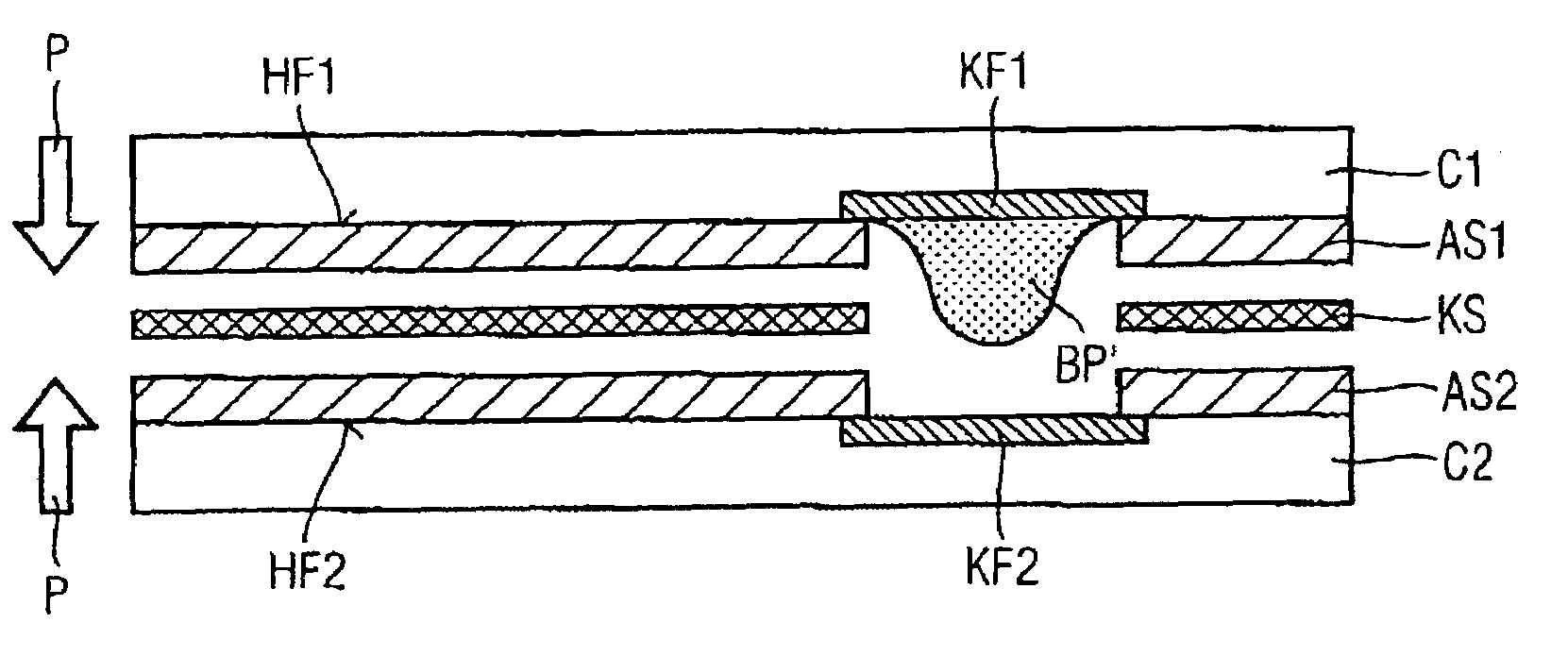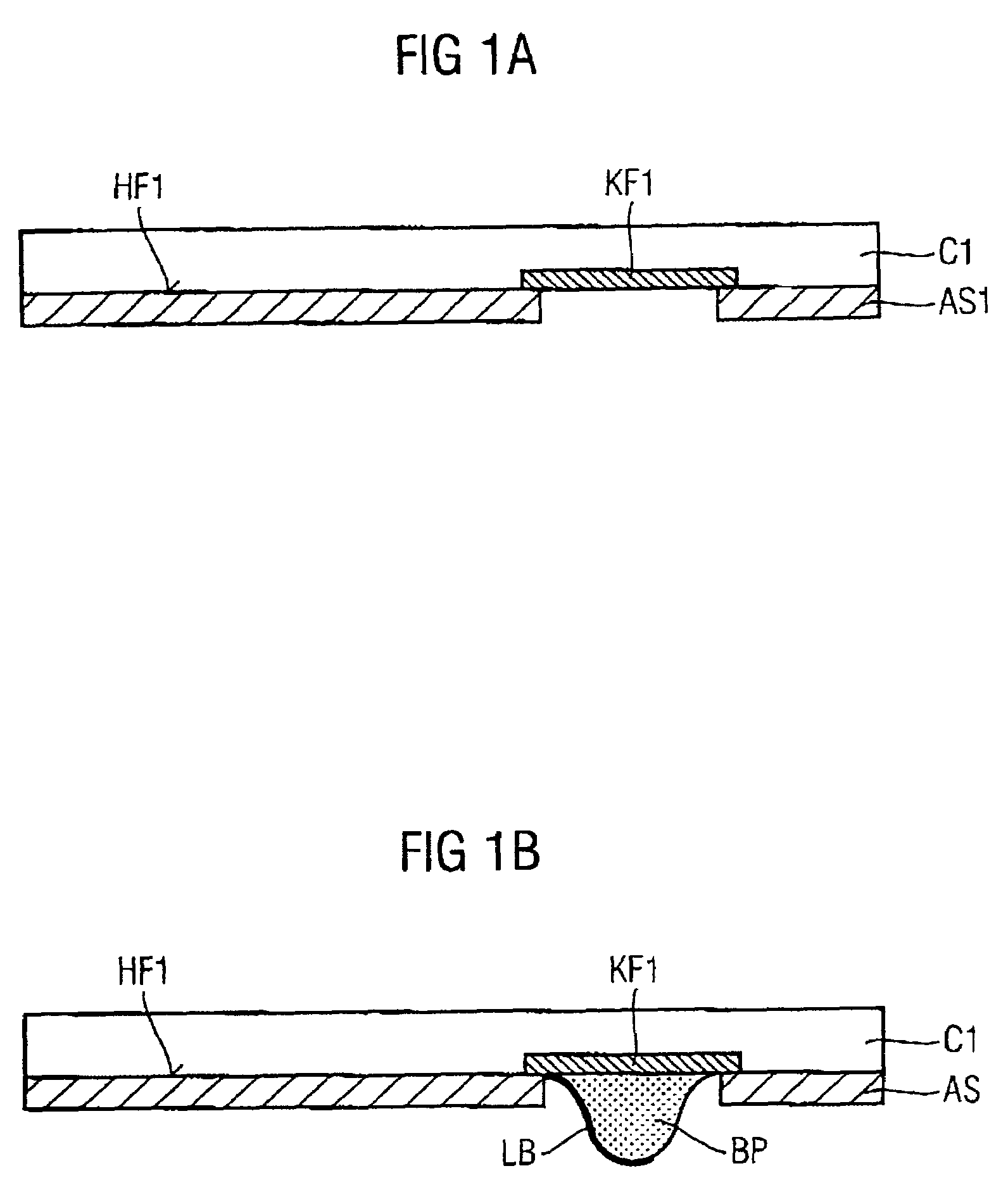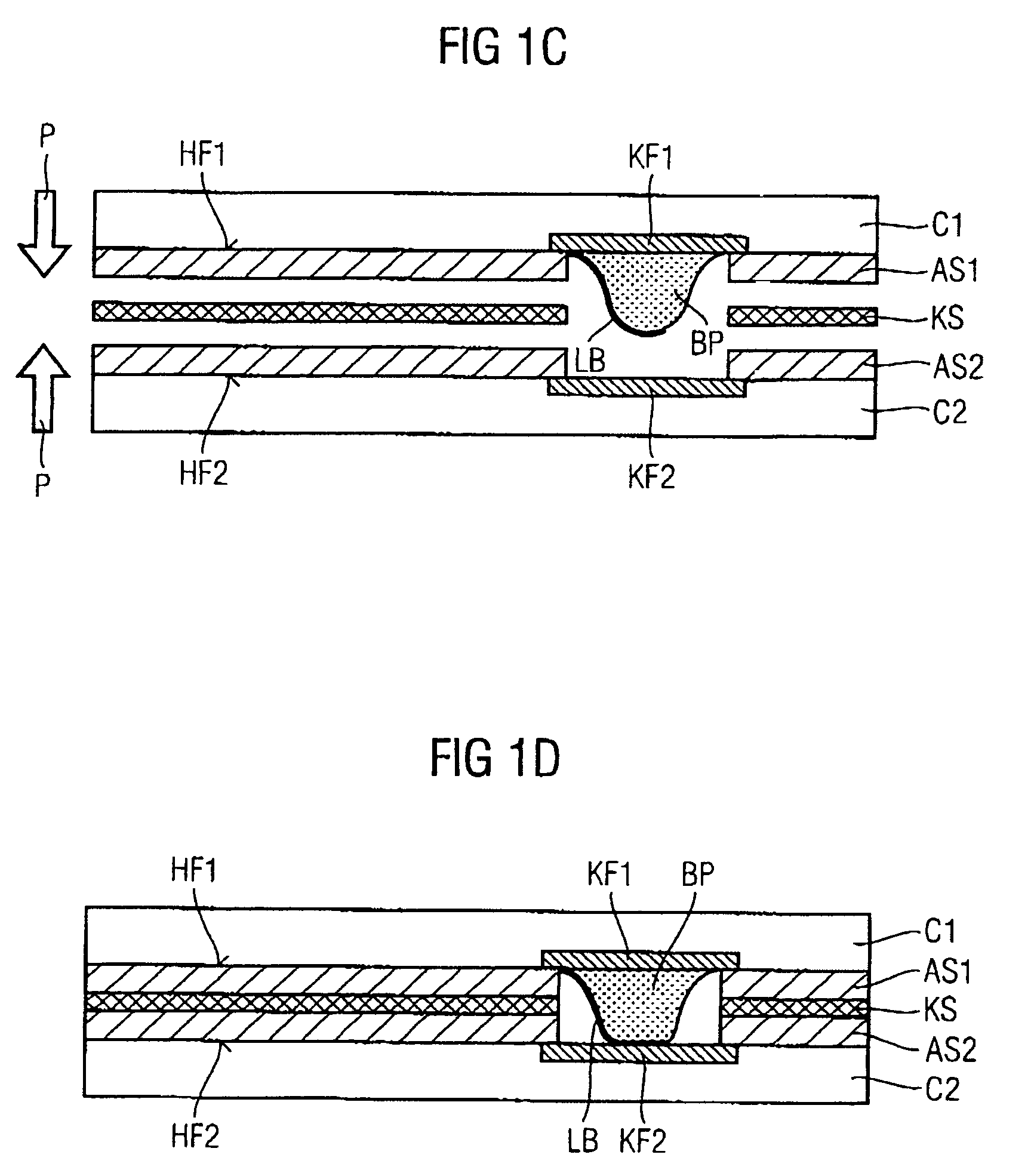Method for connecting an integrated circuit to a substrate and corresponding circuit arrangement
- Summary
- Abstract
- Description
- Claims
- Application Information
AI Technical Summary
Benefits of technology
Problems solved by technology
Method used
Image
Examples
first embodiment
[0034]FIGS. 1a,b are schematic representations of a method for connecting an integrated circuit to a substrate according to the present invention.
[0035]In FIG. 1a, reference numeral C1 designates a first integrated circuit in chip form, which has a first contact area KF1 in a main area HF1. The main area HF1 also has a covering layer AS1 of polyimide, which covers the main area HF1 surrounding the contact area and overlaps the periphery of the contact area KF1.
[0036]In a further method step, which is illustrated in FIG. 1b, a nonconducting elastic elevation BP is provided on the contact area KF1 and its upper side is connected to the contact area KF1 by means of an interconnect LB. Preferred technologies for producing the elastic elevation BP are printing technology, dispensing, ink-jetting, spin-coating, spraying or photolithography. In particular in the case of a nonconductive elastic elevation BP, the interconnect LB may be realized by partial metallization by means of sputtering...
second embodiment
[0040]FIGS. 2a,b are schematic representations of a method for connecting an integrated circuit to a substrate according to the present invention.
[0041]The second exemplary embodiment, described in FIGS. 2a–d, differs from the first exemplary embodiment described above only in that the elastic elevation BP′ is conductive, that is to say the interconnect LB can be omitted. This conductivity is achieved for example by admixing a conductive component with the elastic plastic.
[0042]Although the present invention has been described above on the basis of a preferred exemplary embodiment, it is not restricted to this but can be modified in a wide variety of ways.
[0043]The present invention can in particular be applied not only to chips but also to hybrids, wafers or other integrated circuits.
[0044]It goes without saying that the substrate could, however, also be a printed circuit board or some other substrate. In the case of the mounting of a chip, which is produced for example from silico...
PUM
 Login to View More
Login to View More Abstract
Description
Claims
Application Information
 Login to View More
Login to View More - R&D
- Intellectual Property
- Life Sciences
- Materials
- Tech Scout
- Unparalleled Data Quality
- Higher Quality Content
- 60% Fewer Hallucinations
Browse by: Latest US Patents, China's latest patents, Technical Efficacy Thesaurus, Application Domain, Technology Topic, Popular Technical Reports.
© 2025 PatSnap. All rights reserved.Legal|Privacy policy|Modern Slavery Act Transparency Statement|Sitemap|About US| Contact US: help@patsnap.com



